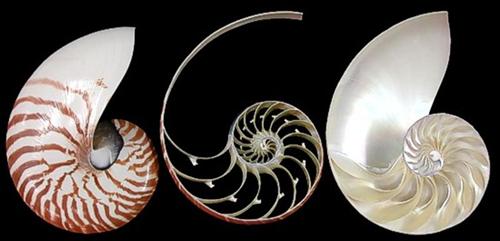The fractal I have decided to print and analyze first is called the Logarithmic Spiral.
This fractal is related to the golden ratio, Fibonacci numbers, and is sometimes referred to as the golden spiral. According to the Wiki I found, The logarithmic spiral was first discovered and explained by Descartes. Later, Jacob Bernoulli, a 16th Century mathematician studied the spiral in more depth. He called it Spira mirabilis, “the marvelous spiral”.


The reason as to why I chose this fractal is because I came across this picture, a cutaway nautilus shell. The top of the shell is cut off, allowing you to see the inside, revealing this beautiful, perfect spirals just like the ones above. The model I picked to print is by Thingiverse’s “cstarrman.” The most interesting part about the model I picked to print is that it allows you to fill the model with sand, and turning it over, leading to a 3-dimensional representation of the Nautilus Shell. I’ve always had a love for the beach and a love for picking up shells, so printing a fractal that is a seashell is really intriguing to me!

****UPDATE 11 September 2017****
On Thursday of last week, September 7th, I finally got the opportunity to start my print! I had to scale it down significantly in order for it to fit into the time we had in class, and it still took ~45 minutes for it to complete. Here are some pictures!





If you can’t tell, there are some major flaws with my print. I don’t know if it was the Ultimaker or the model I picked, but I’m leaning towards the model being the issue. I think that when I was forced to scale it down, it came with some printing issues. There are holes in the model and the structure isn’t 100% complete. It is also very tiny and super fragile. I hope to reprint it in the near future at a larger size to see if that changes things. Other than those issues, I was happy. The detail is incredible and you can really see the elements of the print that make it a fractal.
**** UPDATE #2****
I reprinted my Nautilus Shell about 30% larger and I’m thrilled! This model, being that it was printed larger, is much more sound and strong. The gaps that existed in the first model are now gone. Here are some pictures.





Hey don’t forget to post a “Make” on Thingiverse